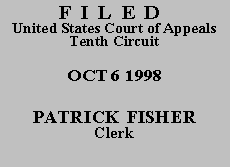

| UNITED STATES OF AMERICA,
Plaintiff-Appellee, |
|
Petitioner Carlos Nevarez-Rodriguez, a federal prisoner appearing pro se, seeks a certificate of appealability to appeal the district court's dismissal of his motion to vacate, set aside, or correct an illegal sentence pursuant to 28 U.S.C. § 2255. We deny a certificate of appealability and dismiss the appeal.
Petitioner was arrested by federal agents in February 1996 and charged with drug-related crimes. He pleaded guilty to possession with intent to distribute more than five grams of cocaine base on June 25, 1996, and judgment was entered by the district court on October 10, 1996. He did not file a direct appeal. On December 5, 1997, petitioner filed a pleading with the district court entitled "Ex parte Motion Under FRCP Rule 9(b), and Rule 12(b)(1)(2)(3)(6), and (7)." In his motion, petitioner argued he should be released from custody because the federal government lacked jurisdiction over crimes committed in the State of New Mexico, and there were no "published regulations in the federal Register to make" the statute he was charged with violating applicable "to the several States and the population at large in which [he] [wa]s a member." The district court construed the pleading as a 28 U.S.C. § 2255 motion and dismissed it as untimely.
Before petitioner may proceed on appeal, he must obtain a certificate of appealability. We will not grant the certificate absent a "substantial showing of the denial of a constitutional right." 28 U.S.C. § 2253(c)(2). The Antiterrorism and Effective Death Penalty Act established a one-year period of limitations for § 2255 motions. See 28 U.S.C. § 2244(d)(1). Here, the limitations period began to run on October 21, 1996, "the date on which the judgment became final by . . . the expiration of the time for seeking [direct] review."(1) 28 U.S.C. § 2244(d)(1)(A). Because petitioner failed to file his motion on or before October 21, 1997, the district court correctly dismissed his motion as untimely.
The application for a certificate of appealability is DENIED and the appeal is DISMISSED. The mandate shall issue forthwith.
Entered for the Court
Mary Beck Briscoe
Circuit Judge
*. This order and judgment is not binding precedent, except under the doctrines of law of the case, res judicata, and collateral estoppel. The court generally disfavors the citation of orders and judgments; nevertheless, an order and judgment may be cited under the terms and conditions of 10th Cir. R. 36.3.
1. Because judgment was entered by the district court on October 10, 1996, petitioner had ten days from that date to file a notice of appeal. See Fed. R. App. P. 4(b). Since expiration of the ten-day period occurred on a Sunday, petitioner had until Monday, October 21, 1996, to file a notice of appeal. See Fed. R. App. P. 26(a). Petitioner did not file a notice of appeal and the one-year limitations period for filing a § 2255 motion began running on that date, giving him until October 21, 1997, to file a § 2255 motion. See 28 U.S.C. § 2244(d)(1)(A).